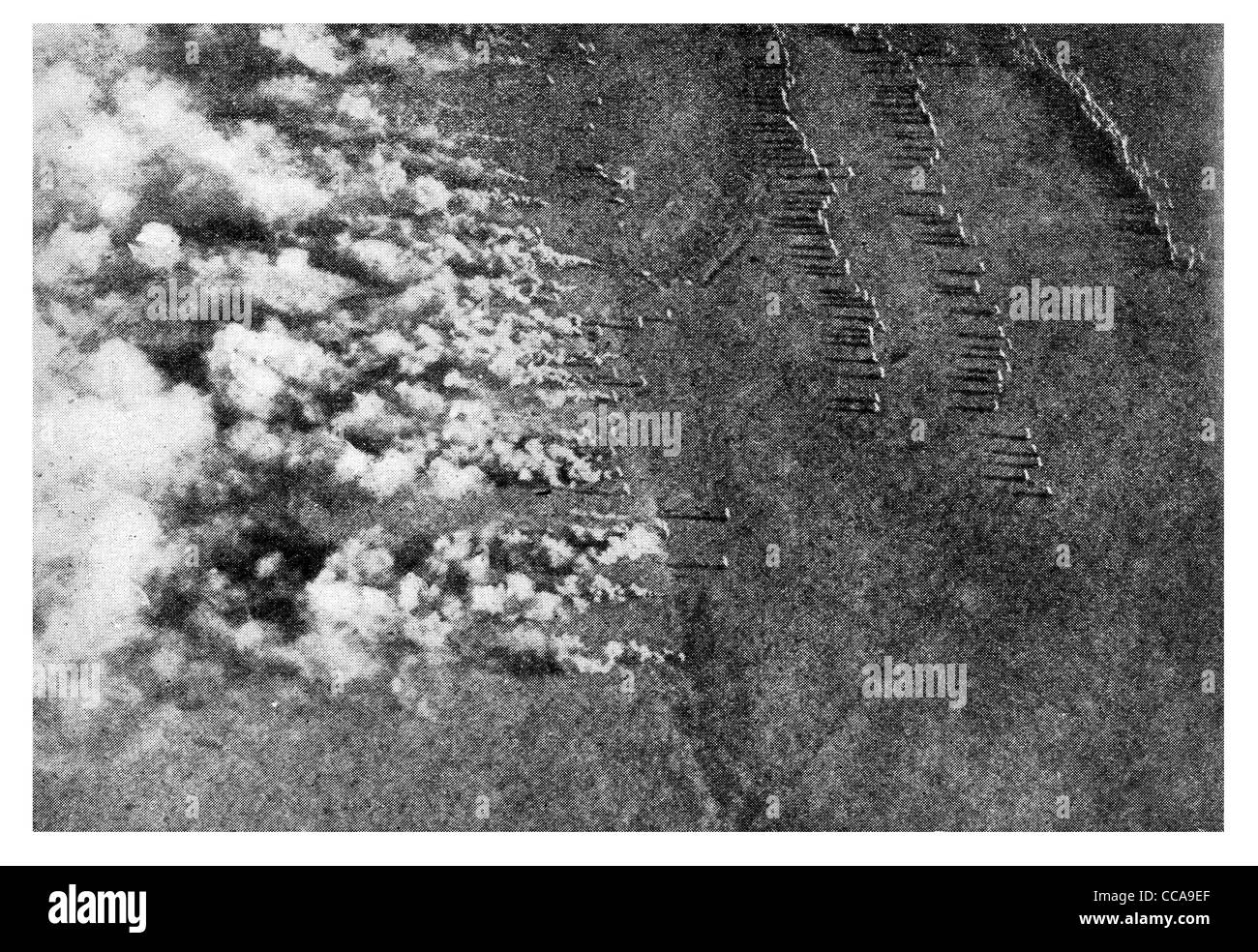1916 German Gas Attack Aerial photograph fatal fumes Russian trench Chemical warfare weapon tear mustard gas respirator mask

Image details
Contributor:
SOTK2011 / Alamy Stock PhotoImage ID:
CCA9EFFile size:
28.6 MB (4 MB Compressed download)Releases:
Model - no | Property - noDo I need a release?Dimensions:
3809 x 2622 px | 32.2 x 22.2 cm | 12.7 x 8.7 inches | 300dpiDate taken:
2012More information:
This image is taken from contemporary news paper reports from The War Illustrated a Conflict of Nations. They are half tone prints. World War I (WWI), which was predominantly called the World War or the Great War from its occurrence until 1939, and the First World War or World War I thereafter, was a major war centred in Europe that began on 28 July 1914 and lasted until 11 November 1918. It involved all the world's great powers, which were assembled in two opposing alliances: the Allies (centred around the Triple Entente of the United Kingdom, France and Russia) and the Central Powers (originally centred around the Triple Alliance of Germany, Austria-Hungary and Italy). These alliances both reorganised (Italy fought for the Allies), and expanded as more nations entered the war. Ultimately more than 70 million military personnel, including 60 million Europeans, were mobilised in one of the largest wars in history. More than 9 million combatants were killed, largely because of great technological advances in firepower without corresponding advances in mobility. It was the sixth deadliest conflict in world history, subsequently paving the way for various political changes such as revolutions in the nations involved. Long-term causes of the war included the imperialistic foreign policies of the great powers of Europe, including the German Empire, the Austro-Hungarian Empire, the Ottoman Empire, the Russian Empire, the British Empire, France, and Italy. The assassination on 28 June 1914 of Archduke Franz Ferdinand of Austria, the heir to the throne of Austria-Hungary, by a Yugoslav nationalist was the proximate trigger of the war. It resulted in a Habsburg ultimatum against the Kingdom of Serbia. Several alliances formed over the previous decades were invoked, so within weeks the major powers were at war; via their colonies, the conflict soon spread around the world.